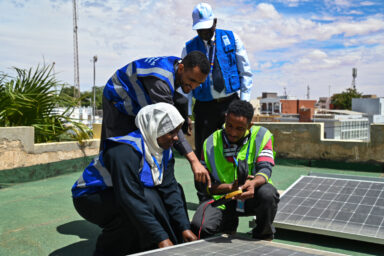Parts of the Arctic Are Feverish and On Fire. And That’s Got Scientists Worried About What it Means for the Rest of the World.
Four Ideas to Replace Traditional Police Officers ; Five Wild Facts About the Saharan Dust Plume ; and More Picks
Four Ideas to Replace Traditional Police Officers ; Five Wild Facts About the Saharan Dust Plume ; and More Picks 6/25
The US Military Has a Boogaloo Problem (Chris C.)
From Vice: “Some of the largest private Facebook groups catering to the boogaloo movement have scores of members who identify as active-duty military.”
Foreign Regulators Demand Substantial New Changes to Boeing 737 Max Flight Controls (Reader Steve)
The author writes, “Aviation safety regulators in Europe and Canada have demanded design changes to the flight control systems on Boeing’s 737 MAX that go beyond fixing the flawed system that ultimately brought down the aircraft in two fatal crashes. The Federal Aviation Administration (FAA) has told Boeing it must come up with design upgrades to satisfy these concerns. Yet all three regulators have agreed Boeing will be required to make these additional design changes and retrofit the worldwide fleet only after the MAX returns to service. The required changes to the flight control systems highlight weaknesses in the 737’s inherited avionics systems.”
Four Ideas to Replace Traditional Police Officers (Dana)
The author writes, “Over the past few weeks, I’ve spoken with more than a dozen sociologists, criminologists, policing experts, nonprofit leaders, and legal scholars to better understand the range of alternatives that exist to our current one-size-fits-all model of police response — and how we could design those alternatives to meet unique challenges like the overwhelming presence of firearms, intertwined histories of racism and policing, and relatively high rates of violent crime in the US.”
Why More Men Aren’t Wearing Masks — and How to Change That (Reader Steve)
The author writes, “Posted online in mid-May, [a] study of 2,459 U.S. participants, ‘The Effect of Messaging and Gender on Intentions to Wear a Face Covering to Slow Down COVID-19 Transmission,’ offers an interesting glimpse into why some men resist the call to cover up — and provides some clues as to how to influence that behavior. In addition to finding that men are less inclined to wear a face mask, the study found that men are less likely than women to believe they will be seriously affected by the coronavirus.”
PODCAST: How ‘Polarization’ Discourse Flattens Power Dynamics and Says Nothing (Chris C.)
From Citations Needed: “On this episode, we explore the origins of ‘polarization’ and ‘partisan tribalism’ discourse, profile its biggest pushers, detail who it serves –– and who it gets off the hook –– and lay out why reductionist and vague ‘polarization’ laments are so beloved by our media and political elite. Our guest is journalist and writer Osita Nwanevu.”
Five Wild Facts About the Saharan Dust Plume Now Hitting the US (Mili)
The author writes, “Expansive dust clouds arise from the sun-baked Sahara each year, making the 5,000-mile journey across the Atlantic Ocean to the southern United States. While these dust plumes tend to stay intact while traveling across the ocean, they typically diffuse by the time they hit the Caribbean. But this year, things are different. … These dust plumes, called the Saharan Air Layer (or SAL) are born when severe wind storms strike the Sahara. Entering the Atlantic Ocean at the Intertropical Convergence Zone, the plumes catch on to the trade winds, which run east-west along the equator.”
Vast Neolithic Circle of Deep Shafts Found Near Stonehenge (Dana)
The author writes, “[A] prehistoric structure spanning 1.2 miles in diameter is [a] masterpiece of engineering, say archaeologists.”


